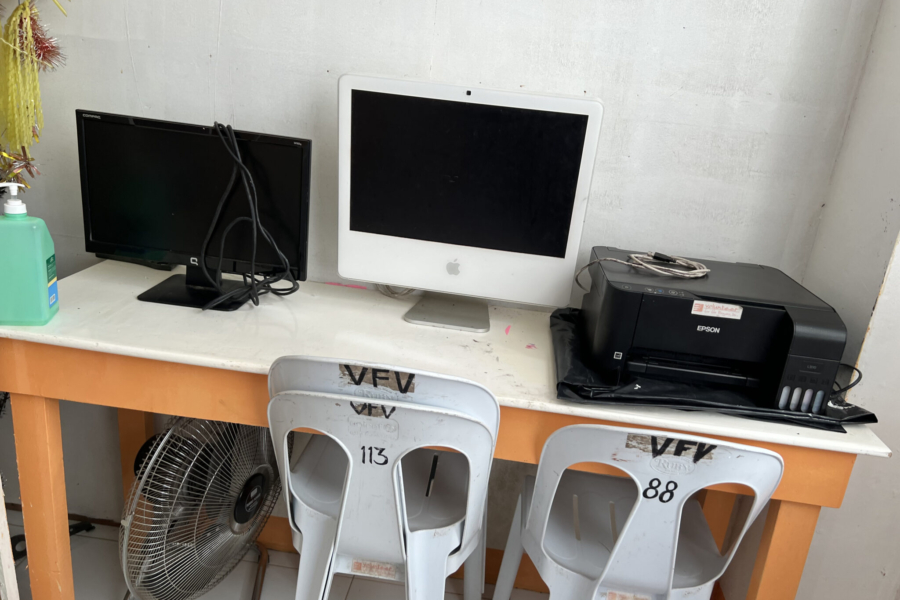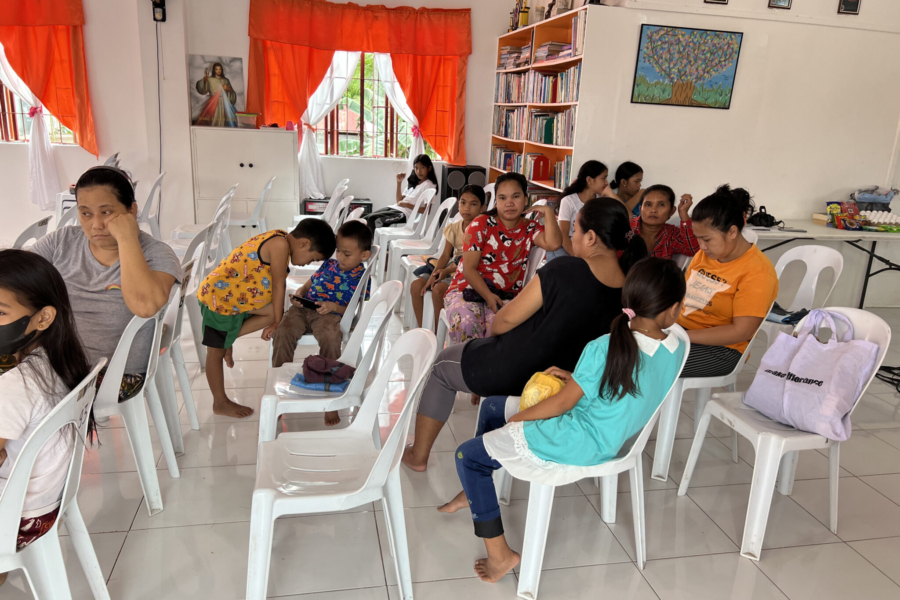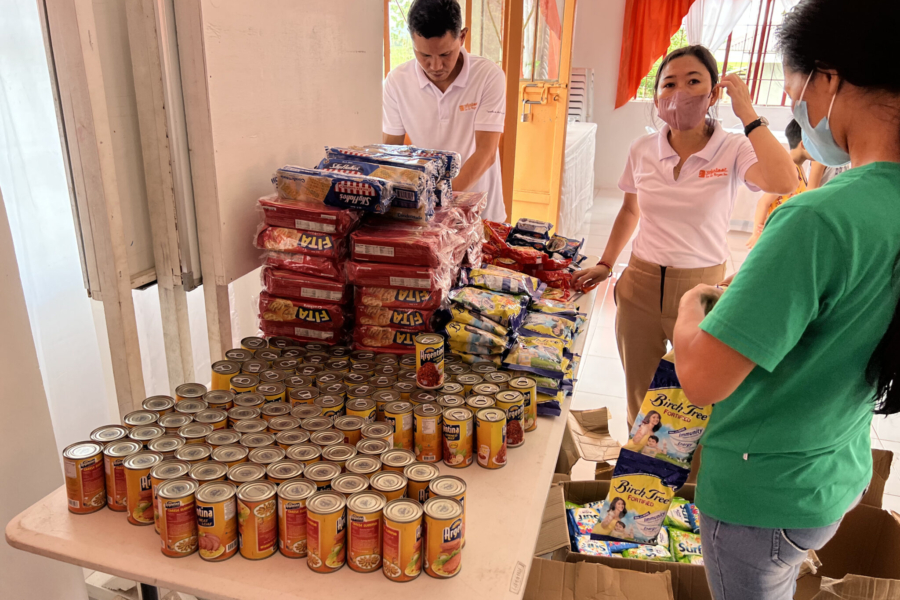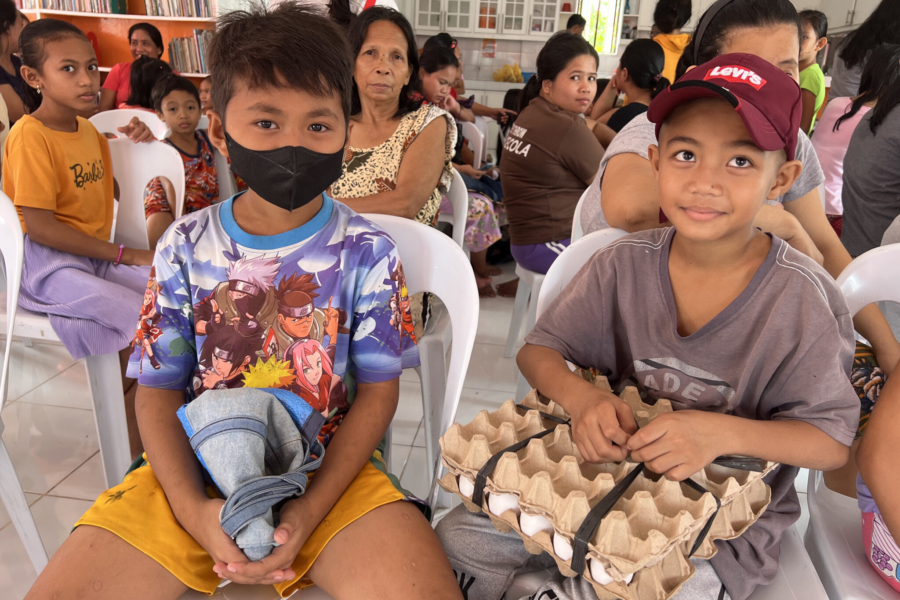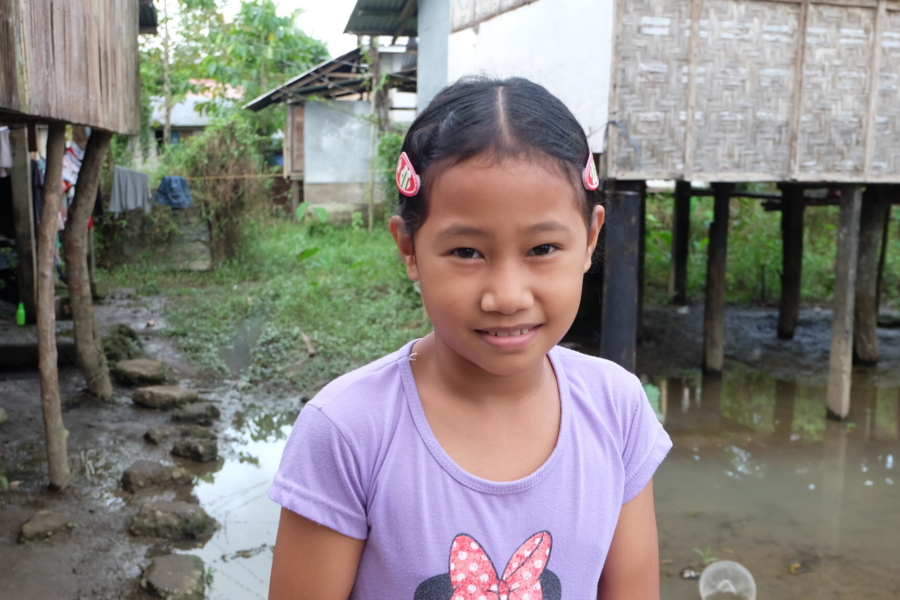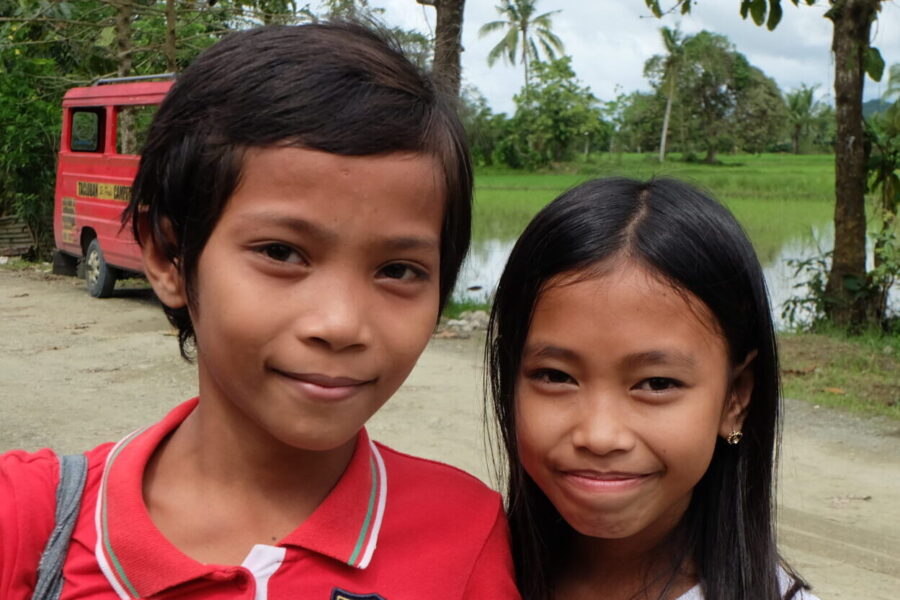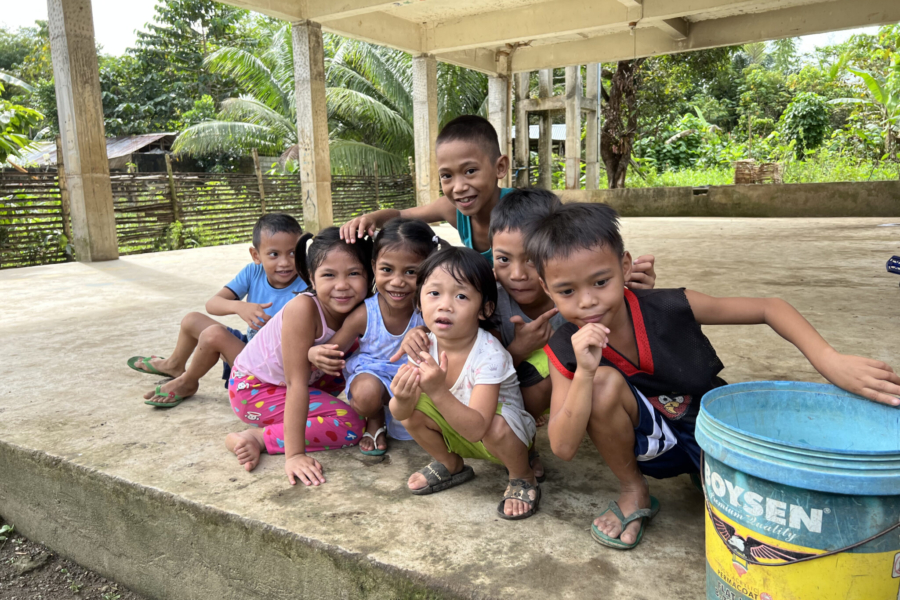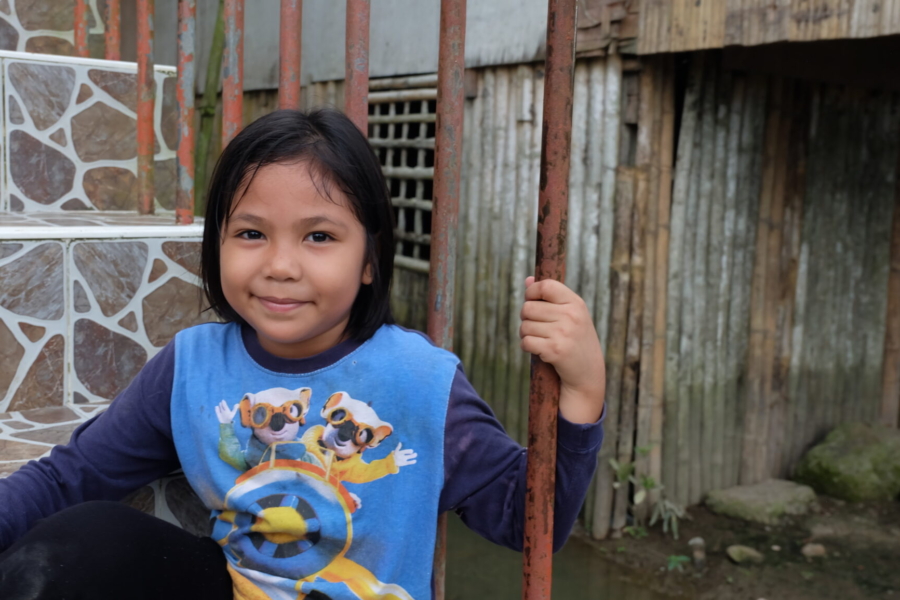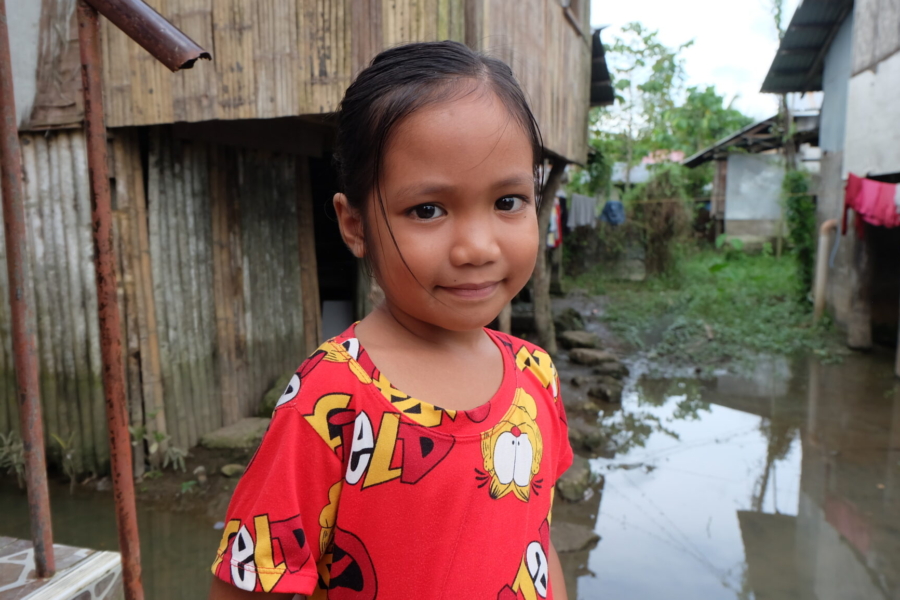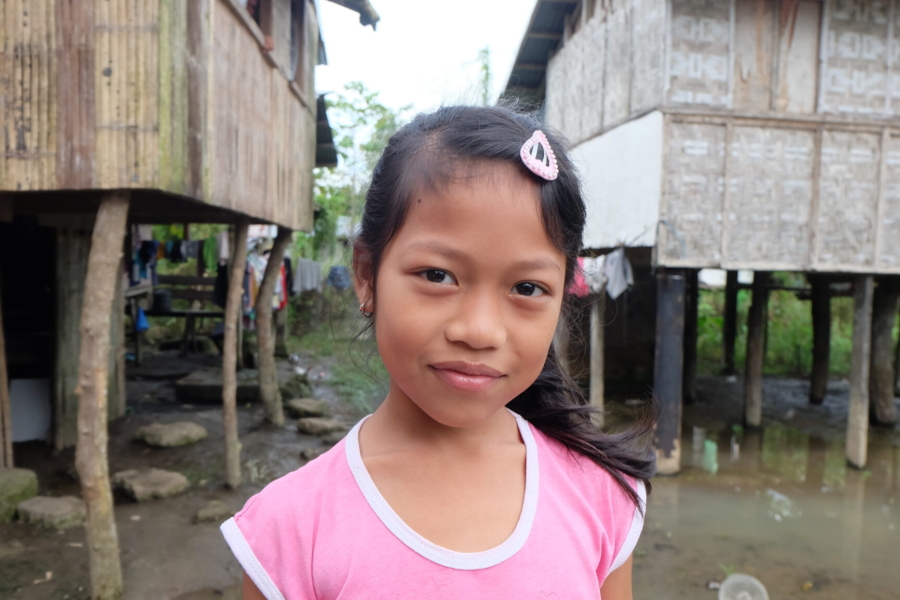I spent the last three days of my trip to the Philippines with our volunteer coordinators, WimWim and Ester, visiting our affiliated sites in Tacloban, all operated under the Volunteer for the Visayans organization, or VFV.
After visiting the Visayans Center at Bliss and the Santo Nino Center in previous days, it was time to visit our final site, the Cancumbang Center, located in the Cancumbang neighborhood about an hour outside of the city center.
Making the trek to Cancumbang
On my last day, I met WimWim and Ester at the VFV office early in the morning, the cargo truck that was taking supplies to the Cancumbung Center for distribution was already fully loaded. Cartons of eggs, large bags of rice, and boxes of canned goods and hygiene items were stacked high on the floor and benches, with enough room in the back for the three of us to sit comfortably. As WimWim, Ester and I loaded ourselves in, other VFV staff members hopped on small motorbikes to make the trek, heading out in front of us, knowing our vehicle would have to drive slowly to not disturb the dry goods.
I could only imagine what it was like for the families to have to endure potential flooding whenever it rained.
We made our way out of the city, and the drive was noticeably different than the route the day before to the Santo Nino Center — although located in a rural community, we still remained in what felt like city limits yesterday. Today, once we turned off the main road to head towards Cancumbang, rice fields surrounded the truck on both sides of the road, and houses were barely noticeable in the distance.
As she saw me ponder our surroundings, WimWim commented that for the sponsored children and their families here, the biggest issue they faced was transportation costs. Even to get to some of the schools, families needed to hire a motorbike, and those expenses cut into purchasing food and other basic necessities they required. But for these residents, living where the work was among the rice fields was their only option for employment, and relocating to the city to look for work was not a guarantee for a better or easier life.
Arriving to our destination
After some time, we stopped in front of a small store on a dirt road, and WimWim and Ester jumped out of the truck, gesturing for me to follow them. Between two houses that stood along the road was a small concrete walkway with a bamboo gate that was swung open. I walked down the path, and as soon as I got beyond the first row of houses, I could see the Cancumbang Center, standing on stilts, two stories above ground.
WimWim explained that this center was built to handle the flooding that occurred in the area on a regular basis, and like the Santo Nino Center, acts as an evacuation center in emergencies as well. The center was built in 2013 and had been completed only a few weeks before Typhoon Yolanda. Although the center sustained a lot of damage during the typhoon, it did not collapse, and VFV was able to repair it and reopen within a few months.
We walked up the stairs to reach the front doors of the center, and as I entered, there was already a lot of activity in the large gathering area. WimWim introduced me to John, the local staff member who lived in the neighborhood and took care of day-to-day operations at Cancumbang, like seeing that the children who wanted to use the computer lab and printer had access, and that the feeding program was running a few days a week. This made things much easier for WimWim, who otherwise only needed to make the drive out to the center a few times a month, so she could focus her efforts on operating the Visayans Center at Bliss. She told me another staff member also lives near the Santo Nino Center, and serves the same purpose of helping on a more daily basis.
At least these families, who were receiving support thanks to Children Incorporated sponsors, could rely on the Cancumbang Center and the VFV staff to help ensure they had what they needed.
Providing the care the community needs
The staff worked quickly to unpack the truck and to bring all the supplies up the stairs, unpacking boxes and unloading egg crates onto tables. Each group of items had their own place to make sure the children each got exactly the same items and everything was accounted for precisely, just like the distributions at the other two VFV centers.
Before long, the children had arrived with their parents and made their way into the center, where they sat in folding chairs facing the front of the room. Each child’s name was called, and without instruction, they filed in line to fill their reusable bags with rice, soap, canned meats, and toothpaste, among other items. I could only imagine what it was like for the families to have to endure potential flooding whenever it rained, which would sometimes keep them from leaving the neighborhood for days at a time. At least these families, who were receiving support thanks to Children Incorporated sponsors, could rely on the Cancumbang Center and the VFV staff to help ensure they had what they needed, which gave them less to worry about in a place where their livelihood, whether in a storm or not, was already fragile.
As all the other sites had, the Cancumbang Center impressed me a lot, and I felt that I was able to leave the Philippines feeling confident that Children Incorporated, and especially our sponsors, were making a huge and lasting difference for these families. And thanks to our amazing partners, just like the VFV, we can continue to offer sustainable support to kids well into the future.
***
How do I sponsor a child in the Philippines?
You can sponsor a child in the Philippines in one of three ways: call our office at 1-800-538-5381 and speak with one of our staff members; email us at sponsorship@children-inc.org; or go online to our sponsorship portal, create an account, and search for a child in the Philippines that is available for sponsorship.



